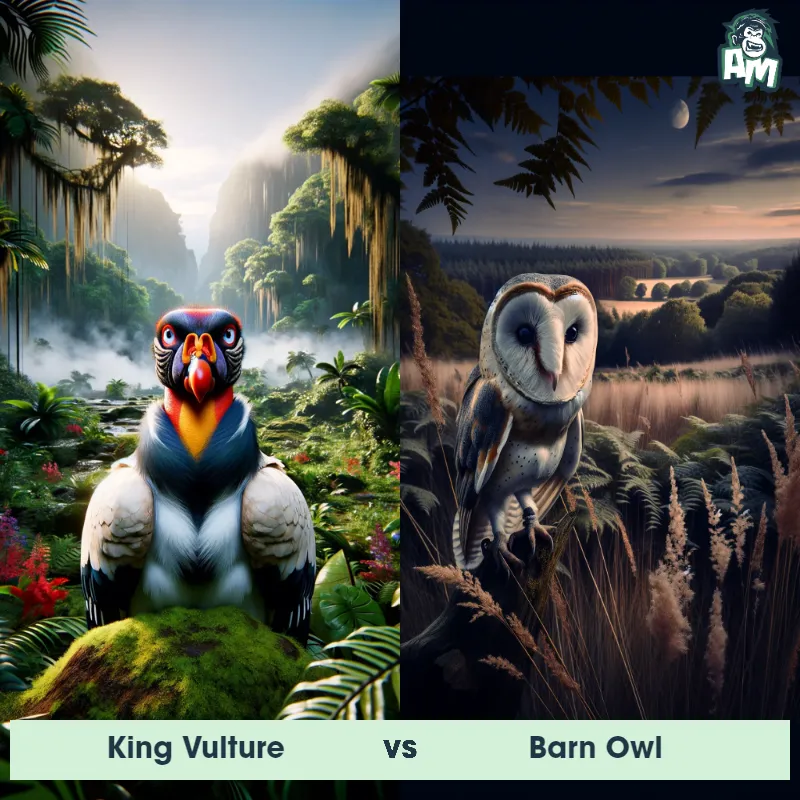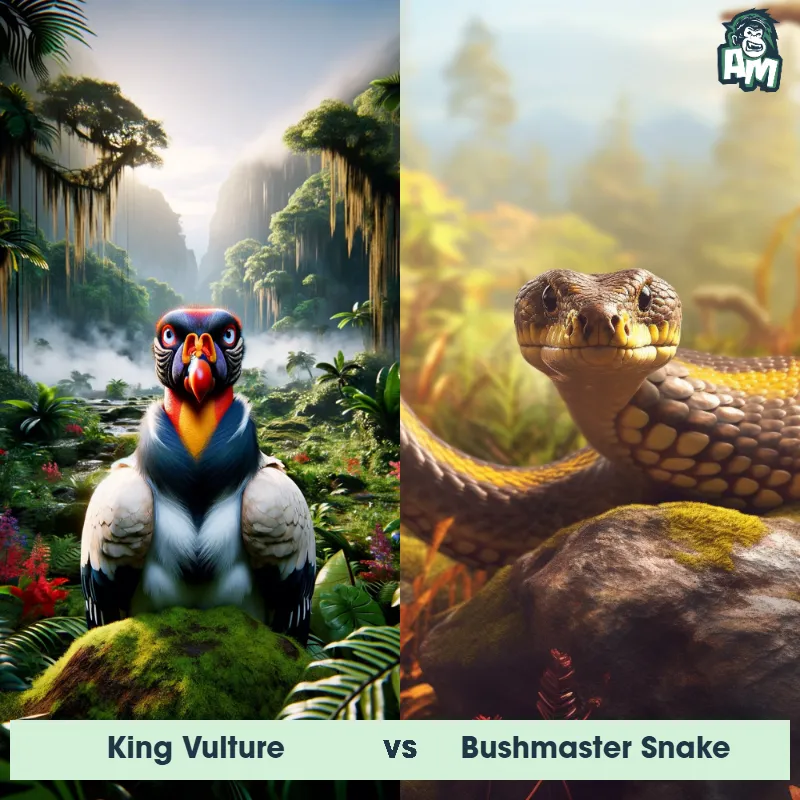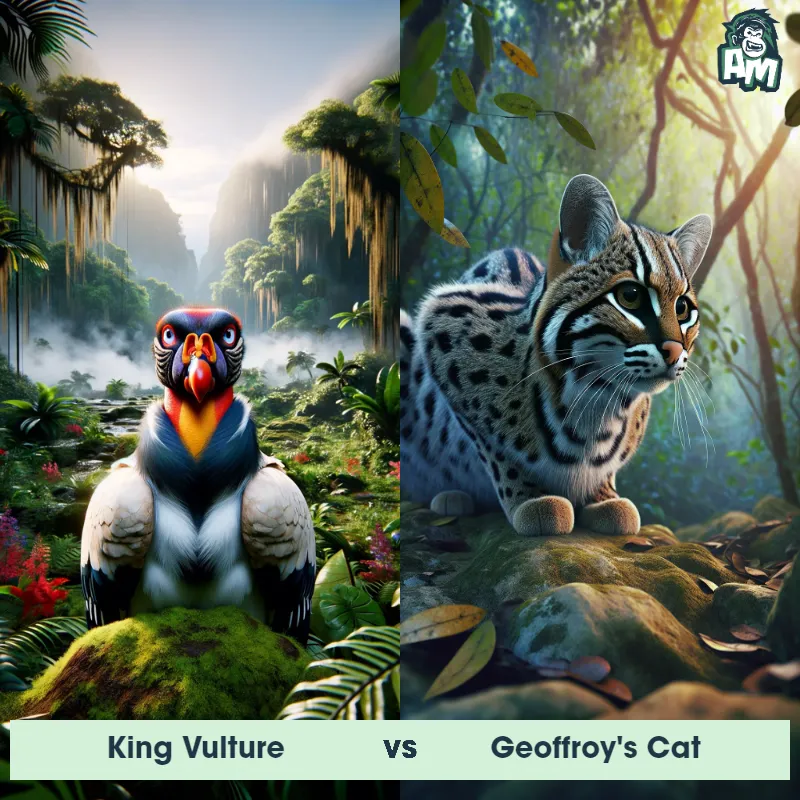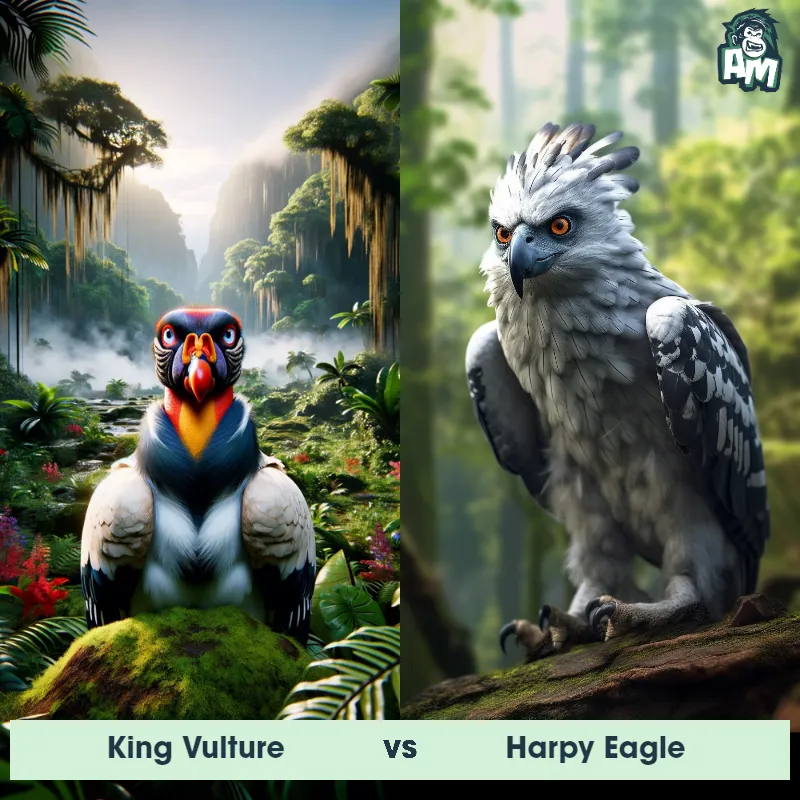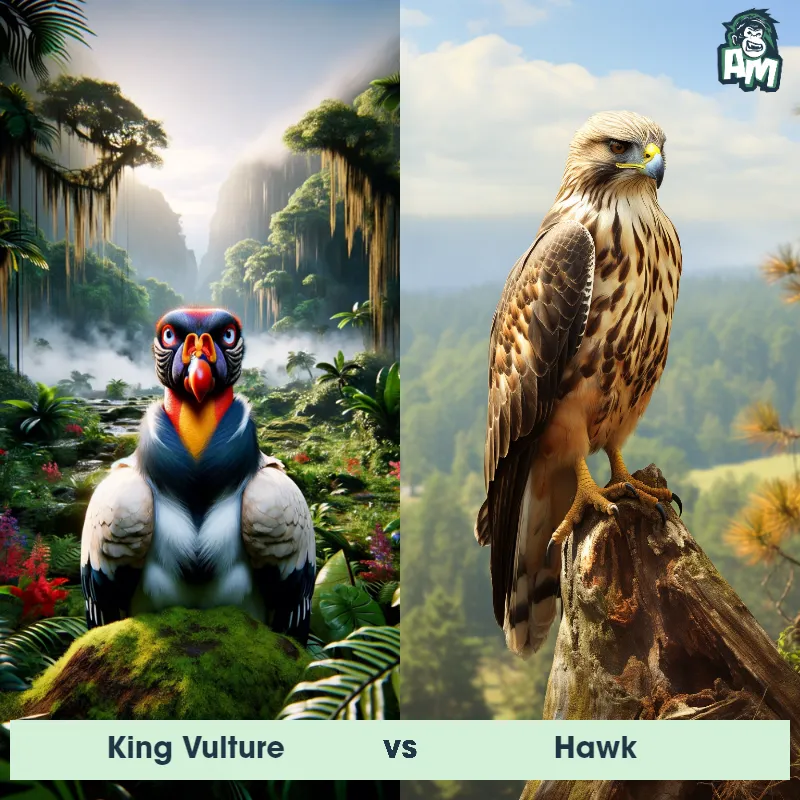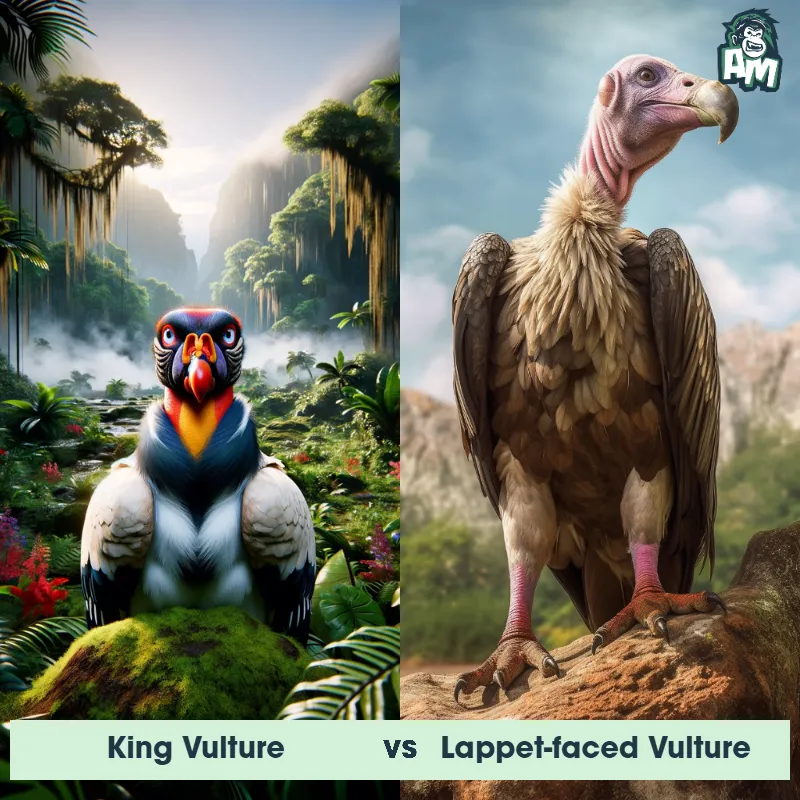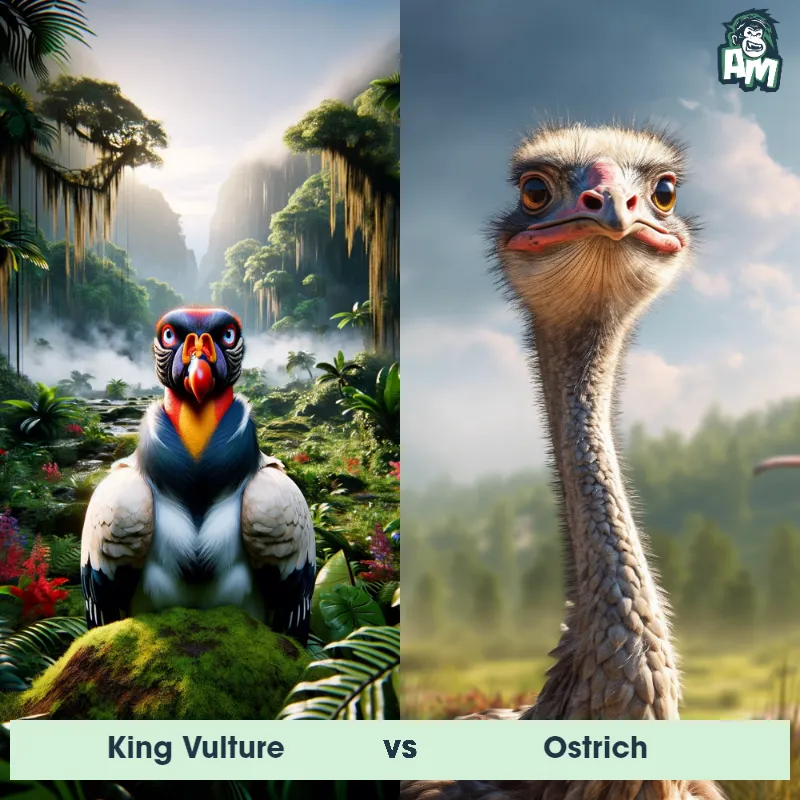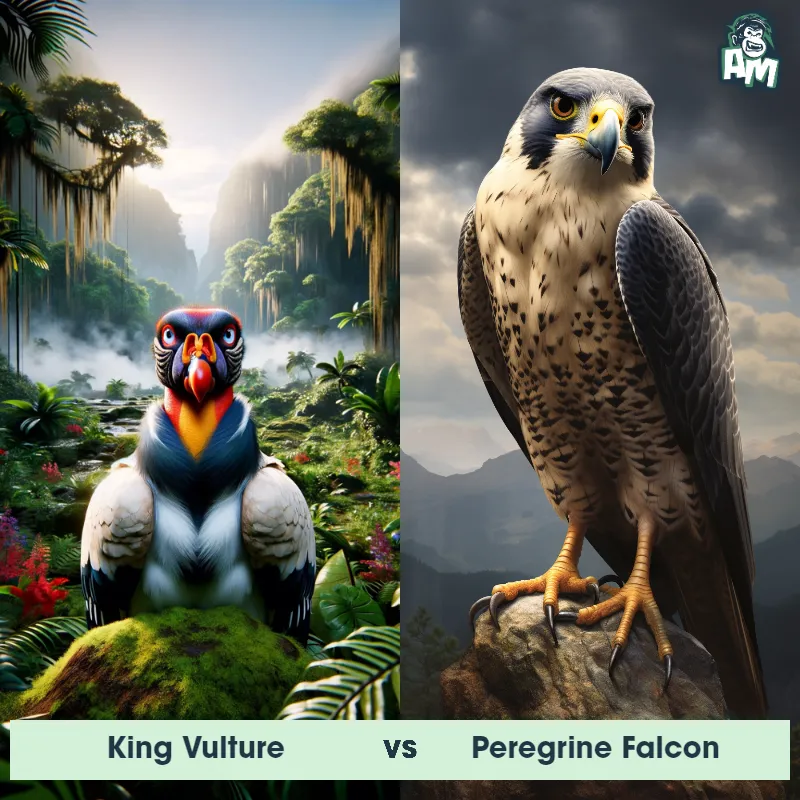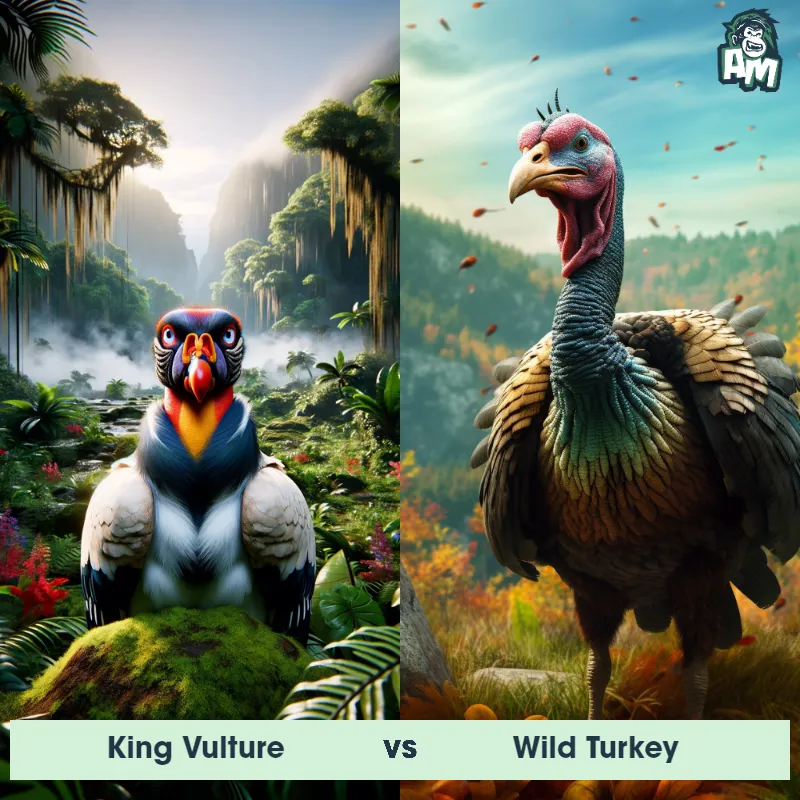The King Vulture
The King Vulture, also known as Sarcoramphus papa, is a large bird species found in the forests of Central and South America. It is easily distinguished by its vibrant and striking appearance. With a wingspan of up to six feet, the King Vulture has predominantly white plumage, which contrasts with its dark black flight feathers. Its bald, featherless head features vibrant colors such as orange, yellow, and red, creating a unique and captivating display. This scavenger species plays a vital role in the ecosystem by cleaning up carrion and preventing the spread of diseases.

| King Vulture | |
|---|---|
| Size | Up to 2.5 feet (76 cm) tall and 6 feet (1.8 m) wingspan |
| Weight | Up to 8 pounds (3.6 kg) |
| Speed | Speed: 10 mph (16 km/hr) |
| Key Strength | Sharp talons |
| Biggest Weakness | Docile nature |
| Scientific Name | Sarcoramphus papa |
| Family | Cathartidae |
| Habitat | Forests and open areas |
| Geography | Central and South America |
| Diet | Scavenger, feeds on carrion |
| Lifespan | 20 years - 30 years |

The King Vulture
The King Vulture, also known as Sarcoramphus papa, is a large bird species found in the forests of Central and South America. It is easily distinguished by its vibrant and striking appearance. With a wingspan of up to six feet, the King Vulture has predominantly white plumage, which contrasts with its dark black flight feathers. Its bald, featherless head features vibrant colors such as orange, yellow, and red, creating a unique and captivating display. This scavenger species plays a vital role in the ecosystem by cleaning up carrion and preventing the spread of diseases.
Fun Fact: Contrary to most vultures that rely on their keen sense of smell to locate their meals, the King Vulture locates carcasses by sight, making it one of the few species that primarily relies on visual cues to find food.
| King Vulture | |
|---|---|
| Size | Up to 2.5 feet (76 cm) tall and 6 feet (1.8 m) wingspan |
| Weight | Up to 8 pounds (3.6 kg) |
| Speed | Speed: 10 mph (16 km/hr) |
| Key Strength | Sharp talons |
| Biggest Weakness | Docile nature |
| Scientific Name | Sarcoramphus papa |
| Family | Cathartidae |
| Habitat | Forests and open areas |
| Geography | Central and South America |
| Diet | Scavenger, feeds on carrion |
| Lifespan | 20 years - 30 years |
King Vulture Matchups
We use AI to simulate matchups between the King Vulture and other animals. Our simulation considers size, strength, and natural predatory behaviors to determine the most likely outcome.

Can't find the Matchup you want?
Create Your Own MatchupKing Vulture: Diet, Predators, Aggression, and Defensive Behaviors
What do King Vultures eat?
King Vultures primarily feed on carrion, scavenging for dead animals in their habitat. They have a diet that includes a variety of mammals, birds, reptiles, and other animals. Despite being primarily scavengers, King Vultures may also consume fruits and insects.
Do King Vultures have any predators?
King Vultures, being large birds of prey, do not have many natural predators. However, they may occasionally face threats from larger birds of prey or mammals looking to prey on their eggs or young chicks.
Are King Vultures aggressive?
King Vultures are not known to be particularly aggressive towards their own kind or other species. They are often seen feeding peacefully alongside other scavengers, including other vultures and carrion-eating animals.
Do King Vultures fight?
King Vultures typically do not engage in physical fights with each other. They often use their size and dominance displays to establish pecking orders at carrion feeding sites. However, King Vultures may resort to aggressive behavior if King Vulture feel threatened or challenged.
How do King Vultures defend themselves?
King Vultures rely on their large size, strong beak, and talons as their main forms of defense. They may use their beaks and talons to ward off potential threats or predators, as well as to protect themselves and their young.
What is the King Vulture's biggest weakness in a fight?
Despite their size and physical prowess, King Vultures may have a vulnerability in aerial combat. While they are powerful fliers, they may be at a disadvantage against more agile birds of prey or predators that can outmaneuver them in the air.
Fun Fact: The King Vulture is known for its towering presence and majestic flight patterns. They often soar high in the sky, using thermals and updrafts to effortlessly glide for long distances in search of food.
Fun Fact: During courtship displays, the King Vulture can be seen performing acrobatic aerial maneuvers, such as soaring high and then rapidly descending in a spiral motion, showcasing its agility and strength. These displays are not only meant to attract a mate but also to establish dominance among competing individuals.




